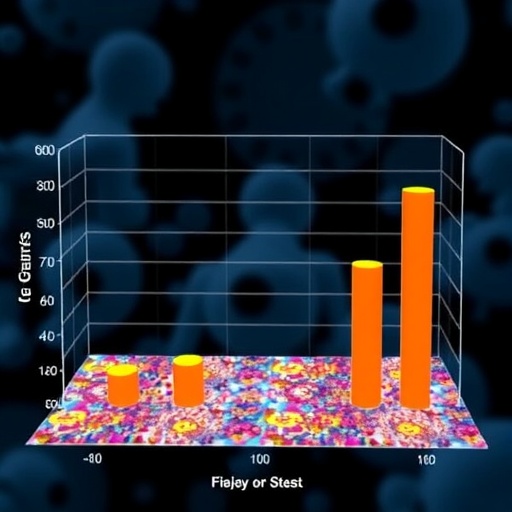In an era where social determinants increasingly influence health outcomes, accurately identifying patients’ social needs within healthcare settings remains a critical challenge. A recent study conducted by researchers at the Fairbanks School of Public Health and the Regenstrief Institute offers fresh insights into the effectiveness of different methods used to measure complex social factors, such as food insecurity, housing instability, financial strain, transportation barriers, and legal issues. Published in JAMA Network Open, this rigorous observational study highlights both the promise and the limitations of current assessment tools, revealing important nuances in accuracy and equity across diverse patient populations.
Healthcare systems worldwide have begun to acknowledge that social determinants are as vital to health as direct medical interventions. However, translating this recognition into practical, reliable means of identification has proven difficult. The study in question rigorously evaluated four distinct approaches: traditional electronic health record (EHR) screening questionnaires, natural language processing (NLP) of clinical notes, rule-based algorithms derived from structured data, and advanced machine learning (ML) models. By comparing these modalities head-to-head, researchers aimed to discern which method or combination thereof most accurately captures the multifaceted landscape of social needs.
Contrary to expectations that cutting-edge computational methods might surpass conventional approaches, the findings revealed that simple screening questionnaires embedded in EHR systems most effectively identified certain social needs, including food insecurity, transportation obstacles, and legal challenges. These questionnaires, typically self-reported by patients or administered during clinical encounters, demonstrated superior sensitivity and specificity compared to algorithmic and ML approaches. Nevertheless, the study emphasizes that this method is not without shortcomings; no single approach was flawless, particularly when tackling more nebulous factors such as financial strain.
Machine learning, a technology lauded for its ability to detect complex patterns in large datasets, showed variable performance dependent on the domain of social need assessed. While ML models exhibited potential in analyzing unstructured text and revealing latent issues, their diagnostic accuracy lagged behind simpler tools in several key areas. Natural language processing, leveraging clinical notes’ free-text data, provided complementary insights but was impeded by noise and inconsistencies inherent to clinical documentation. Rule-based algorithms, which rely on predefined criteria and codified logic, captured some aspects of social adversity but struggled with contextual subtleties that questionnaires could elicit.
An important and often overlooked dimension addressed in this research is the equity of these screening methods across different demographic strata. The study exposed that certain tools disproportionately failed to identify social needs among Hispanic patients and older adult populations, highlighting implicit biases embedded within data-driven approaches. Screening tools skewed by factors such as language preferences, cultural differences, or inconsistent documentation patterns risk perpetuating healthcare disparities rather than mitigating them. These results underscore the imperative for meticulous fairness evaluations in developing and deploying diagnostic technologies.
Joshua Vest, PhD, the study’s lead author and a professor specializing in health policy and management at the Fairbanks School, remarked on the implications, stating that while questionnaires represent a strong baseline, sole reliance on any one method risks under-identification of critical social needs. He stressed the multifactorial nature of social determinants and the necessity of integrating diverse assessment modalities to ensure comprehensive detection and equitable care. This nuanced stance challenges the prevailing enthusiasm surrounding artificial intelligence (AI) as a universal solution, advocating instead for blended strategies.
Christopher Harle, PhD, chair of the Department of Health Policy and Management and co-author, highlighted that health systems must remain vigilant not to unintentionally exacerbate disparities when implementing these tools. As data-driven methodologies become more embedded in clinical workflows, safeguarding against widening inequities requires continuous examination and adjustment. Harle emphasized that coupling technological innovation with human-centered engagement — including direct patient communication and culturally competent care — holds the greatest promise for addressing social determinants effectively.
The study’s conclusions advocate for employing a hybrid approach that combines patient-reported questionnaires with computational analyses to construct a more robust, layered understanding of individual circumstances. This strategy enables healthcare providers to cross-validate findings, address gaps inherent to any single method, and tailor interventions accordingly. As social needs become more systematically integrated into electronic health records and care planning, such multimodal assessment is poised to improve patient outcomes by connecting individuals with appropriate resources more accurately.
Moreover, understanding the technical complexities behind each method deepens appreciation for the study’s insights. Questionnaires are straightforward instruments capturing self-reported data at a fixed point but can miss transient or unarticulated needs. NLP techniques parse clinician notes rich with narrative detail but must overcome challenges like ambiguous language and inconsistent note-taking styles. Rule-based algorithms apply explicit logic but may lack adaptability to new or evolving social factors. ML models excel at recognizing intricate patterns but require large, high-quality datasets and are vulnerable to biases encoded in the training data, necessitating transparency and rigorous validation.
This research arrives at a pivotal moment as healthcare evolves toward more personalized, preventive, and socially aware models. Tools for measuring social needs must not only be scientifically robust but also operationally feasible and ethically sound. The findings propel ongoing debates about the role of technology in social care integration, pushing for frameworks that prioritize accuracy, equity, and human dignity. Ultimately, the goal extends beyond identification to enabling actionable, supportive responses that mitigate social risks and promote holistic health.
As social determinants of health increasingly influence policy discussions, funding decisions, and clinical priorities, the study provides timely, evidence-based guidance to researchers, practitioners, and system designers. It elucidates the strengths and limitations inherent in various screening methods and calls for a balanced, adaptive approach anchored in multidisciplinary expertise. By shedding light on disparities in tool performance, it also raises awareness about the ethical implications of technology deployment in vulnerable populations, advocating for continual refinement to achieve true health equity.
While future research is needed to expand on these findings, including exploring integration within diverse healthcare settings and populations, the present work marks a significant advance in the quest to quantify and address social factors systematically. Researchers and health systems alike stand to benefit from embracing a mosaic of tools — blending human insight with computational power — to better serve patients whose health intertwines closely with their social environment.
In sum, this landmark study reaffirms that capturing the complexity of health-related social needs necessitates more than technological sophistication alone. It demands thoughtful synthesis of traditional methods and innovative analytics, coupled with unwavering commitment to equity and patient-centered care. As health systems chart a course forward, these findings blueprint a path toward more inclusive, responsive, and effective social needs assessment.
Subject of Research: Not applicable
Article Title: Performance of 4 Methods to Assess Health-Related Social Needs
News Publication Date: 18-Aug-2025
Web References:
https://jamanetwork.com/journals/jamanetworkopen/fullarticle/2837664
http://dx.doi.org/10.1001/jamanetworkopen.2025.27426
References:
Fairbanks School of Public Health; Regenstrief Institute; JAMA Network Open, August 2025.
Keywords:
Health equity, Health disparity, Health care delivery, Machine learning
Tags: electronic health record screeningequity in health assessment methodsfinancial strain in healthcarefood insecurity measurementhealthcare assessment toolshousing instability identificationidentifying patients’ social needslegal issues affecting healthmachine learning for social needsnatural language processing in healthcaresocial determinants of healthtransportation barriers in health access





